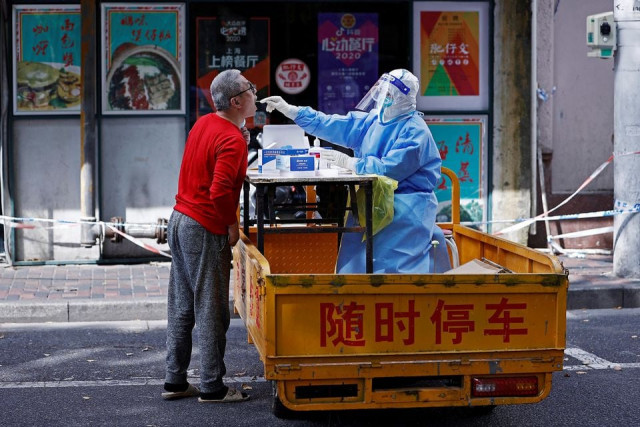China experiencing 'deja vu' effect in COVID-19 pandemic
Mass virus tests, curfews, travel restrictions, quarantine measures have become normal part of life in China

While China seems to have defeated the coronavirus for a long time thanks to the success of quarantine measures in Wuhan, where COVID-19 was first detected, highly contagious delta and omicron variants leading to outbreaks have made the compelling measures permanent.
Mass virus tests, curfews, travel restrictions, and quarantine measures have become a normal part of life in China in the last six months due to the outbreaks in densely populated metropolitan cities, including Xian, Shenzhen, Hong Kong, and Shanghai that host critical business and industry branches.
Thanks to its strategy to combat the COVID-19, the “zero-COVID policy,” China was able to almost completely contain the pandemic until December 2021.
The highly contagious omicron variant has become a test for China's "zero case" strategy against the disease.
The strategy, which aims to suppress COVID-19 infections where they occur and cut the chain of transmission, requires strict and large-scale measures such as quarantine, travel restrictions, and mass testing.
The measures sometimes cause controversy regarding their interference in the normal flow of life and their cost to the country’s economy.
It remains unclear how China will adopt its combat strategy over time, while other countries have largely removed their protection measures against COVID-19 and entered normalization processes.
Closures hit production
Production in factories was suspended due to the closure in the Changchun city where the factories of the FAW Group (First Automotive Works Group) -- the automotive company that produces world brands -- are located.
A week-long shutdown in the technology center Shenzhen, which hosts Chinese tech giants Huawei, Tencent, BYD, and Foxconn, also disrupted production.
China is witnessing a resurgence of COVID-19 across the country with the economic hub Shanghai the worst hit.
The city of 26 million imposed a severe lockdown and held several rounds of mass testing to arrest the spread of the deadly infection.
Many cases have also been reported in the capital Beijing which has imposed severe measures to halt the spread of the infection.
China reported 324 new cases, seven deaths, and 817 recoveries over the past 24 hours.
In total, China has reported 220,721 confirmed cases, including 5,198 deaths, since the outbreak in December 2019.



















COMMENTS
Comments are moderated and generally will be posted if they are on-topic and not abusive.
For more information, please see our Comments FAQ